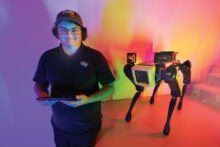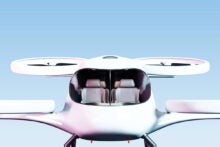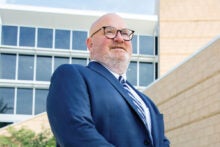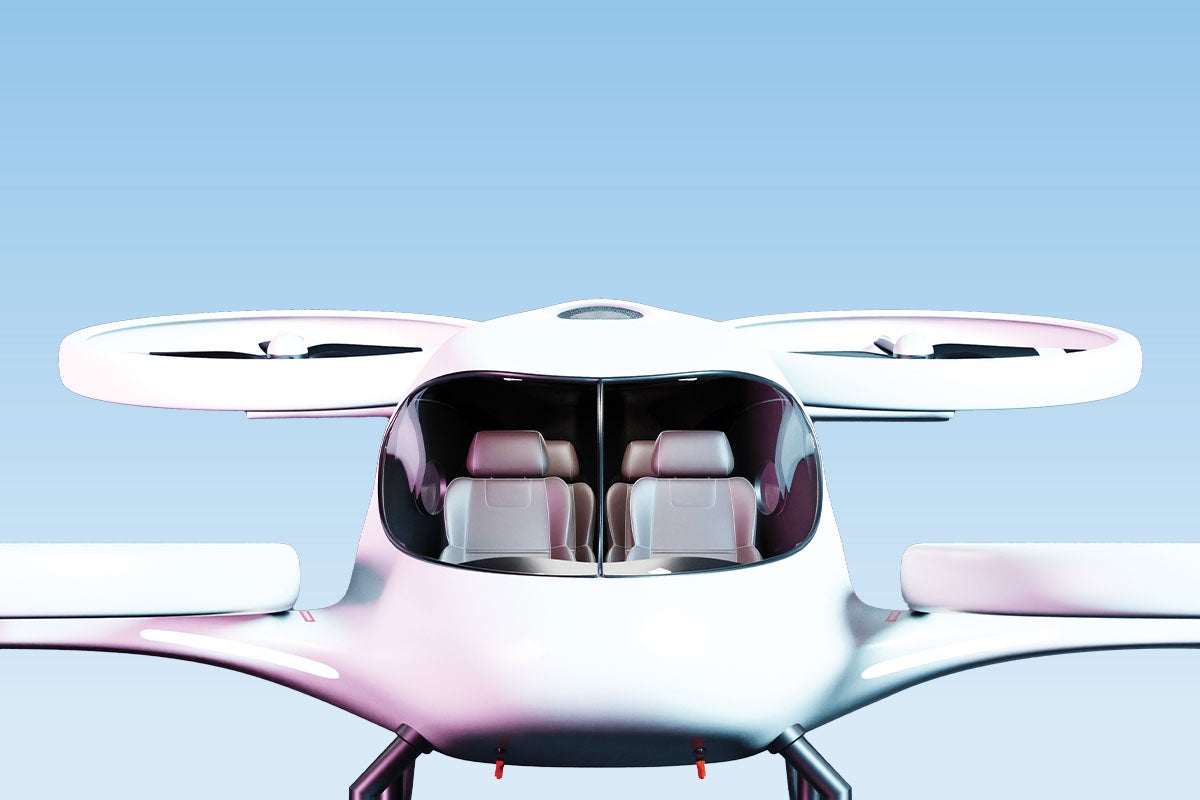
Flying taxis taking to highways in the skies were the norm for characters in futuristic cartoons like The Jetsons, but they could become our reality in the near future.
Advanced air mobility (AAM) refers to a collection of innovative airborne technologies that would make the local, on-demand movement of people and goods using autonomous or uncrewed electric aircraft a reality. They are often referred to as electric vertical take-off and landing (eVTOL) vehicles.
For Timothy Ravich, an associate professor in the College of Community Innovation and Education’s Department of Legal Studies, it’s a concept-turning-reality that could alter the way we view transportation. The global flying car market is expected to be valued at $3.8 billion by 2035, according to Allied Market Research. Florida in particular may be an early adopter of AAM as it’s a test area for several air mobility companies — from Eve Air Mobility, which has a presence in South Florida, to German-based Lilium, which wants to operate in Lake Nona.
As an aviation lawyer, Ravich’s research interests focus on the regulatory environment related to emerging transportation and communications technologies, including AAM. He recently served as the principal investigator of a U.S. National Science Foundation grant that funded the Advanced Air Mobility Conference at UCF in March.
“AAM is essentially the next natural step in transportation in many parts of the world,” he says.
Here, Ravich examines the implications of AAM and how it might be introduced in the coming years.
Why is the concept and development of AAM important?
From a resource or environmental point of view, the concept of a transportation system that could be more efficient in getting people to and from places is essentially why this is important. AAM dates back, at least in the short term, to an Uber Elevate white paper, which imagined ways to reduce traffic congestion through short-haul routes via on-demand urban air transportation.
By short haul, we’re talking either intra-city routes — like within Orlando — or intercity routes, say from Orlando to Lake Nona. That’s not really an area that traditional aviation serves. The thought is that this next generation of aircraft fundamentally would operate on battery power and electrified engines. That’s important because it is, at least in theory, an environmentally friendly and economical way of transportation that is otherwise not available currently.
How might AAM integrate into our existing transportation systems?
A big part of this is the regulatory component. The airspace has traditionally been dominated by crewed aircraft. Now, regulators — in collaboration with private and public stakeholders inside and outside of the aviation industry — are working to understand and configure an airspace ecosystem in which the “flying taxis” might operate.
Planes, especially commercial aircraft, fly on prescribed routes. These AAM aircraft would probably fly not much higher than about 400 or 500 feet, so they’re not really going to conflict with a commercial aircraft. But they might be flying around airports, or near buildings or ground infrastructure, so there are a number of working groups that are endeavoring to understand where the new “highway in the sky” could be to accommodate them. What we’re seeing from regulators and engineers is we may end up with corridors in the sky where there are specific areas in which these aircraft — and only these aircraft — can fly.
What are the challenges of AAM in urban areas?
The goal here is to have a fully autonomous, uncrewed vehicle. Even short of that long-term goal, there are significant concerns attached to AAM. For example, because a lot of this technology is going to be autonomous or internet-based, is it possible that these aircraft could get hacked? Can they be commandeered and used in ways that will threaten local, state and national security, not to mention personal property rights?
Another issue is unwanted noise, even though the aircraft are surprisingly quiet. You often hear the phrase “not in my backyard,” and some people just wouldn’t want these flying, hovering, loitering, etc., around or near them.
Another focus is on the equity dimension of AAM. It goes beyond economic status and into accessibility. In other words, are people who have special mobility needs going to be able to use this transportation system easily? Manufacturers in the space are really trying to think broadly about what it means to be inclusive with respect to this technology, not just the laws that are inclusive.
There is also tension between whether we should draft laws that are local or federalized in nature. The airspace in which airplanes fly is called the National Airspace System, and the federal government controls that. But local concerns are important, too, and it’ll be interesting to see how it plays out with what I’ll call low-level flights. The City of Orlando has invited me to be a part of a task force on such issues to chart a path forward, and we began meeting this fall.
How do you see advanced air mobility evolving over the next five to 10 years?
In July, the Federal Aviation Administration announced 2028 as an aspirational date for some of the fundamental AAM systems to go online, and when we can expect some of these aircraft operating. Regulators are going to be more conservative or cautious than companies or firms in the space who would like to operationalize their business plans as quickly as possible.
My crystal ball suggests that this will be a viable commercial technology around 2035. In any event, anybody who thinks that the technology itself isn’t ready now is wrong, particularly in the space of cargo and shipment. The best way to get people comfortable with the aircraft is to start with cargo and logistics to show that they’re flying safely — perhaps autonomously — and reliably. If you could show that, people will start to think, “All right, maybe I’ll give this a chance.” That’s exactly how many of the most important technologies that we today take for granted took flight.
















